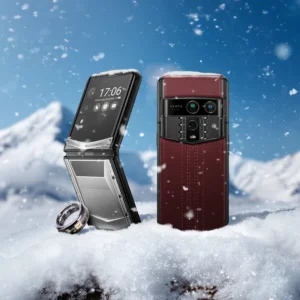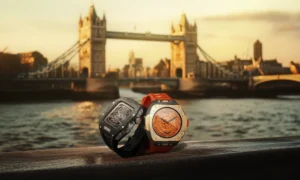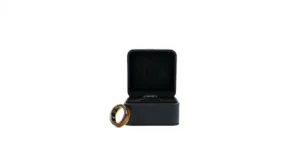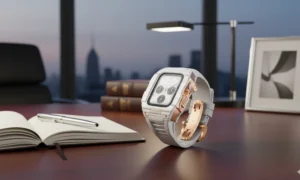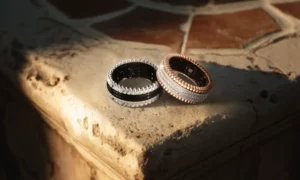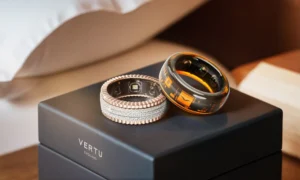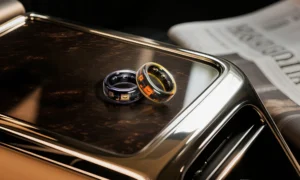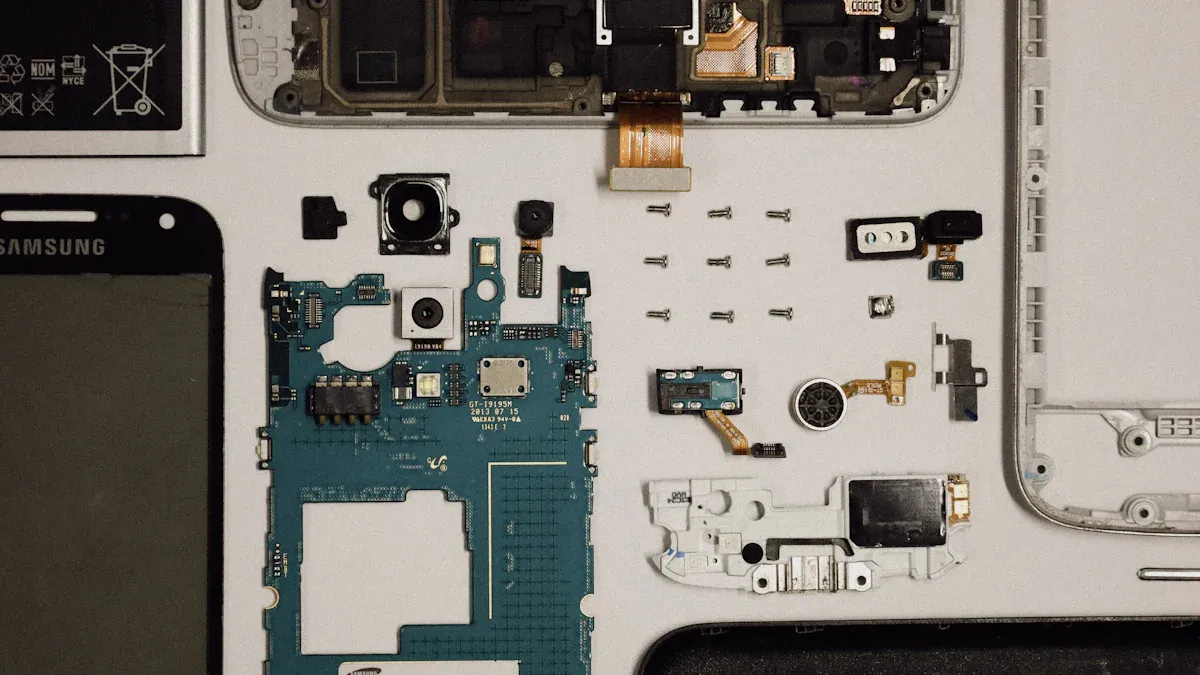
You might be surprised to know a phone has about 0.034 grams of gold and 0.34 grams of silver. These metals may seem like a small amount, but they give each precious metal phone real value. There are more than 2.5 billion smartphones in use. The amount of electronic waste keeps growing. Less than 20% of this waste gets recycled. Luxury models like the VERTU QUANTUM FLIP use advanced materials. Every phone adds to electronic waste and holds important metals worth getting back.
Key Takeaways
-
Smartphones have tiny bits of gold, silver, and other precious metals. These metals can be worth a lot when recycled. Gold in phones helps them work well. It carries electricity and does not rust. This makes devices last longer. Recycling phones gets back these valuable metals. It also cuts down on electronic waste. This helps keep the environment safe from pollution. New recycling methods can get over 90% of gold and other metals. This saves energy and means we do not need to mine as much. Every phone recycled saves resources. It helps the recycled metals market. It also helps make the planet cleaner and greener.
Gold in a Cell Phone
Where Gold Is Found
You might not see it, but gold hides in many parts of your smartphone. When you open a phone, you find gold on the circuit boards and inside tiny components. Gold in a cell phone appears in places like the processor, SIM card contacts, and connectors. These are all parts of a phone that contain gold. Even the camera and wireless charging coil use gold for better performance.
-
Gold lines the connectors and pins that link different chips.
-
You find gold in the logic board, which acts as the phone’s brain.
-
Small amounts of gold coat the contacts in the battery and display.
-
Gold helps the electrical circuits in mobile phones work smoothly.
If you collect about one million used phones, you can recover 70 to 85 pounds of gold. Scientists have found safer ways to extract gold from old phones. For example, Cornell University created a method that uses an organic compound instead of harmful chemicals. This new process makes gold recovery safer for people and the planet.
Why Gold Is Used
You might wonder why gold is so important in your phone. Gold used in phones is not just for looks. It has special properties that make it perfect for electronics. Gold does not rust or corrode, so it keeps working even when exposed to air or moisture. It is easy to shape and stretch, which helps in making tiny parts.
|
Aspect |
Details |
|---|---|
|
Conductivity |
Gold carries electricity well, making it ideal for fast signal transfer. |
|
Corrosion Resistance |
Gold does not react with air or water, so it lasts a long time. |
|
Flexibility |
Gold bends without breaking, which helps in small, delicate parts. |
Gold in cellphones helps the device last longer and work better. You find gold in connectors, relays, and chips. These parts need to stay clean and reliable. Gold’s unique features make sure your phone works every time you use it.
Amount of Gold in Mobile Phones
Typical Quantities and Value
You might ask how much gold is in your phone. Most smartphones have between 7 and 36 milligrams of gold. This is a very small amount. But there are billions of phones in the world. That means all the gold together is a lot. One study says an average phone has about 16.83 milligrams of gold. Most of this gold is in the printed circuit board. Some phones can have up to 36 milligrams.
The price of gold changes over time. Right now, the gold in one phone is worth between $0.60 and $2.50. Each phone also has about 90 milligrams of silver. These amounts seem small, but they matter when you add them up. All the gold and silver from old phones is important. Phones actually have more gold per ton than natural gold ore. So, recycling phones is a smart way to get precious metals back.
Did you know? If you recycle one million phones, you can get about 34 kilograms of gold and 350 kilograms of silver. That is a lot when you think about how many phones people throw away every year.
Here is a simple table showing how much precious metal is in a phone:
|
Metal |
Amount per Phone |
Value per Phone |
|---|---|---|
|
Gold |
7–36 mg |
$0.60–$2.50 |
|
Silver |
~90 mg |
$0.10–$0.20 |
Comparison Across Brands
Different brands and models use a little more or less gold. Most of the gold is in the circuit boards, connectors, and camera parts. Some luxury phones, like the VERTU QUANTUM FLIP, use special materials and look fancy. But the gold inside is about the same as other expensive phones. The main difference is in the design and extra features, not the gold amount.
Scientists have checked many phones for gold and silver. For example, one ton of old phones has about 368 grams of gold and 3,573 grams of silver. These numbers include all the parts, like the circuit boards, screens, and cameras. Experts study gold in phones to help recyclers know what they can get back. But there are not detailed numbers for every phone model. Most phones, simple or fancy, have about the same amount of gold and silver.
Tip: When you recycle your old phone, you help save valuable metals and cut down on waste. Every phone makes a difference!
Other Precious Metals in Phones
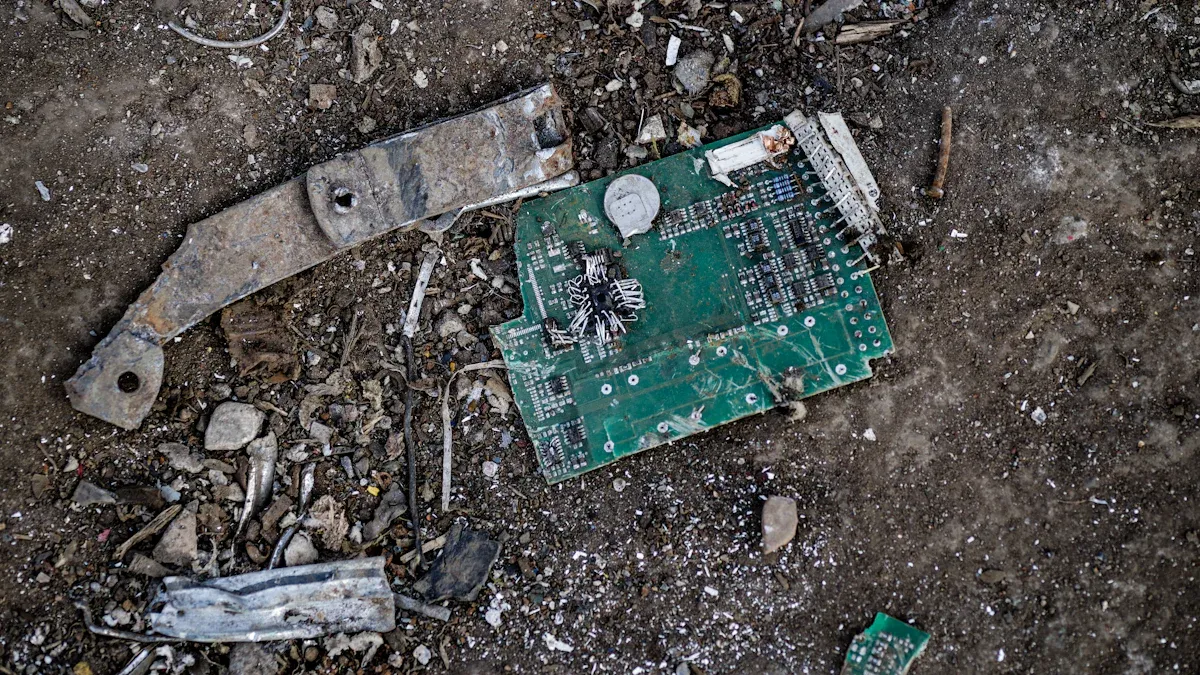
Silver and Palladium
Your smartphone has more than just gold inside. Silver and palladium are also important in every phone. Silver helps move electricity fast and keeps your phone working well. Palladium is used in small parts called capacitors. These parts help control how electricity moves.
Here is a table that shows how much silver and palladium are in a typical iPhone and what you get from one million phones:
|
Precious Metal |
Quantity per Typical iPhone |
Quantity from One Million Phones |
|---|---|---|
|
Silver |
350 kilograms |
|
|
Palladium |
0.015 grams |
15 kilograms |
Even a little bit in each phone adds up when you recycle many phones. Reports from the industry say recycling companies use different ways to get these metals back. They use machines, chemicals, and even living things to help. These reports talk about gold, silver, platinum, and palladium. They show how electronics like smartphones help the recycled metals market grow. The reports also say using recycled metals is important for electronics, jewelry, cars, and airplanes.
-
The reports talk about getting silver and palladium from old electronics.
-
They explain recycling methods like pyrometallurgical and hydrometallurgical processes.
-
Electronics, like smartphones, are a main source for these metals.
-
The reports look at places all over the world and say recycling should be sustainable.
When you recycle your phone, you help the environment. You also help the recycled metals market grow.
Rare Earths and Copper
Phones also have rare earth elements and copper. Rare earths like neodymium and dysprosium help your phone’s speakers and vibration motors work. Copper makes the wires and lines that carry power and data.
Researchers studied what is inside mobile phones. They found printed circuit boards (PCBs) are about 16% of a phone’s weight. These boards have most of the valuable metals. One ton of waste PCBs can be worth over $50,000 because of the metals inside. Copper is the easiest metal to get back. Hundreds of tons are collected each year from old phones. Tin and nickel also add value.
Scientists use special ways to take rare earths and copper out of PCBs. They break the boards into small pieces and use chemicals to get each metal. First, they take out rare earths. Then, they get the copper. Hydrogen peroxide helps remove the copper. This careful process makes recycling better and saves money.
Your phone is not just a gadget. It is full of valuable metals that can be used again. Recycling helps save resources and cuts down on waste.
Precious Metal Phone Recycling
Environmental Impact
Recycling a precious metal phone helps the Earth. Electronic waste is a big problem today. People throw away millions of phones each year. Most old phones end up in landfills. Electronic waste can leak bad chemicals into soil and water. Recycling stops this pollution and saves important resources.
Mining for gold, silver, and palladium hurts nature. It destroys animal homes and pollutes rivers. Mining also makes greenhouse gases. Recycling gold from old phones uses less energy. It causes less damage to the planet. Studies show recycling metals from phones is better than mining. You can see how much it costs to get metals from waste phones in this table:
|
Metal |
Cost to extract from 1g in waste smartphone (USD) |
|---|---|
|
Cobalt |
10.106 |
|
Palladium |
0.024 |
|
Antimony |
0.135 |
|
Beryllium |
0.005 |
|
Neodymium |
0.08 |
|
Praseodymium |
0.016 |
|
Platinum |
0.006 |

Recycling old phones gets metals back faster and with less pollution. For example, one million recycled phones give about 34 kg of gold. This keeps valuable metals out of landfills and protects nature.
Benefits of Recycling
Recycling a precious metal phone gives you many good things. Old phones have lots of gold, silver, and other metals. Recycling helps get these metals back and means we do not need to mine as much.
-
Hydrometallurgical methods can get over 90% of gold from old phones, which is much better than old ways.
-
Phone circuit boards have ten times more precious metals than rocks from mines, so recycling works really well.
-
New recycling methods, like E-RECOV, use less energy and make less waste than old smelting.
-
Americans throw away almost $200 million in gold from phones every year. Recycling gold saves this money.
Recycling electronic waste also saves money and helps the planet. You help stop pollution and save energy. Getting gold from phones helps keep materials in use instead of throwing them away. When you recycle, you make sure precious metals are used again and do not hurt the Earth.
Tip: Each time you recycle a phone, you help cut down on electronic waste and make the world cleaner and greener.
Every phone has a little gold and silver inside. These metals help phones work better and last longer. Recycling old smartphones saves important resources. It also helps keep the planet clean. Fancy phones like the VERTU QUANTUM FLIP mix technology and skill. When you recycle, you help get back metals worth over €15,000 per ton. This also helps the world reach its sustainability goals.
FAQ
How much gold can you get from recycling one phone?
You can get about 7 to 36 milligrams of gold from one phone. This gold is worth between $0.60 and $2.50. The exact amount depends on the phone model.
Why do smartphones use precious metals?
Smartphones use precious metals because they carry electricity very well. Gold, silver, and palladium help phones work better and last longer. These metals also do not rust or break down easily.
Can you recycle rare earth metals from phones?
Yes, you can recycle rare earth metals from phones. Special recycling methods help get these metals back. This saves resources and helps protect the environment.
What happens if you throw away your old phone?
If you throw away your old phone, valuable metals go into landfills. This wastes important resources and can pollute the ground and water. Recycling helps get these metals back and keeps the planet cleaner.
Do luxury phones like the VERTU QUANTUM FLIP have more gold?
Luxury phones like the VERTU QUANTUM FLIP use special materials and designs. They have about the same amount of gold as regular smartphones. The big difference is in how they look and extra features.

